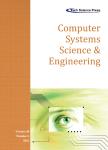Intelligent Intrusion Detection System for the Internet of Medical Things Based on Data-Driven Techniques
作者机构:Faculty of Computers and Information TechnologyUniversity of TabukTabuk71491Saudi Arabia National Engineering School of MonastirUniversity of MonastirMonastir5000Tunisia Applied CollegeUniversity of TabukTabuk71491Saudi Arabia Department of ElectronicsFaculty of Engineering AnnabaAnnaba23000Algeria
出 版 物:《Computer Systems Science & Engineering》 (计算机系统科学与工程(英文))
年 卷 期:2023年第47卷第11期
页 面:1593-1609页
学科分类:08[工学] 0812[工学-计算机科学与技术(可授工学、理学学位)]
主 题:Machine learning data-driven technique KPCA KPLS intrusion detection IoT Internet of Medical Things(IoMT)
摘 要:Introducing IoT devices to healthcare fields has made it possible to remotely monitor patients’information and provide a proper diagnosis as needed,resulting in the Internet of Medical Things(IoMT).However,obtaining good security features that ensure the integrity and confidentiality of patient’s information is a significant ***,due to the computational resources being limited,an edge device may struggle to handle heavy detection tasks such as complex machine learning ***,designing and developing a lightweight detection mechanism is *** address the aforementioned challenges,a new lightweight IDS approach is developed to effectively combat a diverse range of cyberattacks in IoMT *** proposed anomaly-based IDS is divided into three steps:pre-processing,feature selection,and *** the pre-processing phase,data cleaning and normalization are *** the feature selection step,the proposed approach uses two data-driven kernel techniques:kernel principal component analysis and kernel partial least square techniques to reduce the dimension of extracted features and to ameliorate the detection ***,in decision step,in order to classify whether the traffic flow is normal or malicious the kernel extreme learning machine is *** check the efficiency of the developed detection scheme,a modern IoMT dataset named WUSTL-EHMS-2020 is considered to evaluate and discuss the achieved *** proposed method achieved 99.9%accuracy,99.8%specificity,100%Sensitivity,99.9 F-score.



